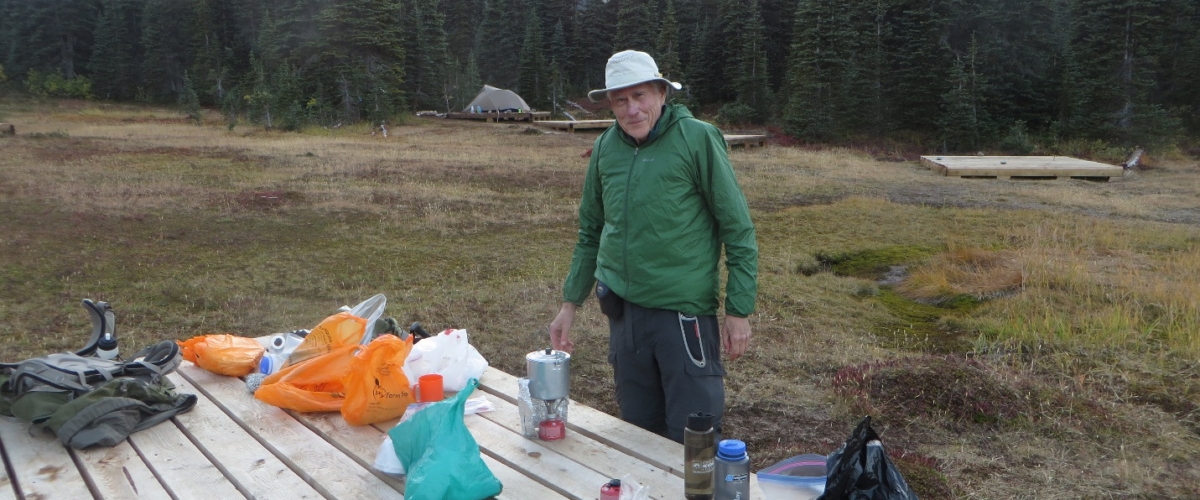Garibaldi Adventure – Part 3
Thursday, September 28th, 2017 (Continued)
We descended and ascended several small peaks in the ridge, and then decided it was time for lunch. Even though we had bright sunshine in a blue sky, a cold wind was blowing and it was quite cold. We found a sheltered spot for lunch, and settled down in the grass high above the valley below.
After lunch, we went on further along the ridge. As we enjoyed the magnificent views, we came upon a lone grizzled elderly man who told us he had camped on the ridge the night before. When I commented that he had been up there all alone, he said “Yes, that is the point”. He must have been a very efficient camper, as his back pack was very small, and he had obviously survived a very cold night.
We had seen signs that limited camping to designated campgrounds only. He admitted that one was not supposed to camp on the ridge, but he had done so. He was doing a one-nighter, and obviously had a long way to go to get out of the park, so we parted company after a brief conversation. His stamina was obviously quite formidable.
Across the lake, we had good views of Mount Garibaldi, a volcano which stands at 2,678 meters. Garibaldi began erupting 250,000 years ago, and has grown steadily since then. It has its origins, like all Cascade volcanoes, in the Cascadia subduction zone, where the oceanic crust of the Pacific Ocean sinks beneath North America. Hot magma upwelling above the descending oceanic plate creates volcanoes, and each individual volcano erupts for a few million years. One would therefore expect that Mount Garibaldi will be active again in the future, although its last eruption appears to have occurred about 10,000 years ago.
An unusual volcanic structure called “The Table” lies between Mount Garibaldi and Garibaldi Lake. This volcano erupted beneath glacial ice, and is composed of a stack of pancake-like rock structures. Garibaldi itself also erupted partially onto glaciers. It must have been quite a scene as hot molten lava mixed with ice.
There were snowfields on the slope below us as we rambled over Panorama ridge. We amused ourselves by taking pictures of each other.
We eventually turned and began to descend the long rocky trail off Panorama Ridge. On our descent, we met a tall thin morose young man with two young women in tow. In contrast to him, they seemed quite cheerful and friendly. One can’t blame him for perhaps being a little tired and worried. As we passed the mileage sign at the trail junction at 4 PM, we had only five kilometers to go. They had come up on a day hike from Cheakamus Lake campground, and still had 13 kilometers to go. It would be a long round trip for them, a total of 32 kilometers.
Our trek back to Helm Creek Campground was largely uneventful, although as beautiful as ever. We were accompanied for a time by several black and white birds, which eventually cooperated and yielded some good pictures.
We stopped at a stream to filter two liters of water, as I was not sure we had enough to see us off the mountain. Then we were back at camp and had our dinner of couscous with broccoli, salmon, and cashews. It was my turn to make dinner, and I thought I had made a big one. However, my hungry hiking partner found it necessary to supplement it with one of his hamburgers in a huge Kaiser bun. It was dark before we were finished.
The weather was cool, but not as cold as the night before. It seemed to be changing and unstable. Gusts of wind were at times cold, and at other times strangely warm. I wrote in my journal for a time with my headlamp, and Ted did some star watching. Then it was time for bed. I hoped that the forecast of rain for the following morning would not come true.




















